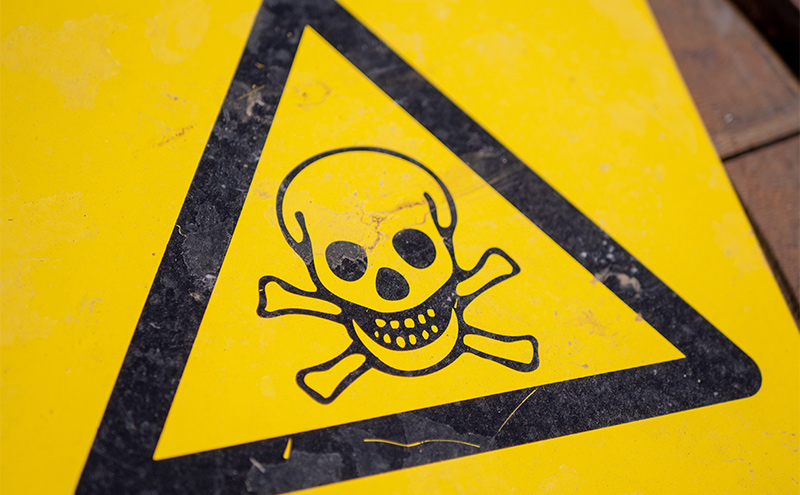The risk of harmful hydrogen sulfide exposure to humans can occur during professional or personal use. Produced from organic materials decay, it’s found naturally in many underground mines, construction sites and openings. It is a part of volcanic gases, some mineral waters and unrefined carbonaceous fuels, such as natural gas, crude oil, and coal.
Knowing what hydrogen sulfide is, as well as its health and safety risks, is critical.
What is Hydrogen Sulphide?
Hydrogen sulfide is a colourless, poisonous gas with a sweet taste. It is often referred to by miners as ‘stinkdamp’ due to its pungent odour, resembling rotten eggs.
It’s naturally generated from reservoir biomass and sulphate-containing minerals through microbial sulphate reduction and thermochemical sulphate reduction.
CAS Number: 7783-06-4
Chemical Compound: H2S
Other names: hydrogen sulfide, hydrosulfuric acid, sulfane, dihydrogen sulfide, stink damp
Chemical Properties
Molecular weight: 34.08 g/mol
Boiling point: -60 °C
Melting point: -85.49°C
Relative vapor density (air = 1): 1.19
Auto-ignition temperature: 270°C
How Hydrogen Sulfide is Used
H2S occurs naturally in the environment and is a commonly used industrial chemical. It can occur in the refining process as a by-product of oil and gas production or the manufacturing of pesticides, leather, dyes, pharmaceuticals, and sulfuric acid.
Safety Hazards of Hydrogen Sulphide
Hydrogen sulphide is exceptionally hazardous, due to its high levels of flammability and toxicity. Personnel should be aware of the potential risks, hazard assessment, and related actions to ensure their safety.
Exposure to hydrogen sulphide most often occurs during the drilling and production of natural gas, crude oil and petroleum products. Additional contact can occur in refineries, oil and gas wells, battery stations and pipelines as well as the transportation of fluids with dissolved H2S.
Due to its heavy density relative to the typical composition of air, the gas tends to pool and stagnate in wells and poorly ventilated areas. Universal occupational exposure limits are set out to eliminate any risk of adverse health effects.
Prolonged exposure to the gas has significant long-term side effects on our health and, in extreme cases, can be fatal. As exposure increases, irritation occurs to the nose, throat, lungs and eyes before disturbing the nervous system, causing headaches, vomiting and dizziness. Extreme exposure levels produce anoxia, the absence of oxygen in arterial blood and tissues, paralysing the respiratory system and ultimately resulting in death.
Exposure Standard Details
| Time Weighted Average (parts per million) | 10 |
| Time Weighted Average (mg/m3) | 14 |
| Short Term Exposure Limit (parts per million) | 15 |
| Short Term Exposure Limit (mg/m3) | 21 |
Hydrogen Sulfide Acute Exposure Guideline Levels
Acute Exposure Guideline Levels (AEGLs) demonstrate the general population’s potential health experiences for the airborne concentration of a substance. They apply to emergency exposure periods ranging from 10 minutes (min) to 8 hours (h).
Hydrogen Sulfide Results – AEGL Program
| 10 min | 30 min | 60 min | 4 hr | 8 hr | |
| AEGL 1 | 0.75 ppm | 0.60 ppm | 0.51 ppm | 0.36 ppm | 0.33 ppm |
| AEGL 2 | 41 ppm | 32 ppm | 27 ppm | 20 ppm | 17 ppm |
| AEGL 3 | 76 ppm | 59 ppm | 50 ppm | 37 ppm | 31 ppm |
Source: Environment Protection Agency
Hydrogen sulphide is a highly flammable and explosive gas; flames can quickly flashback to the source of a leak. H2S can travel considerable distances, forming explosive mixtures in the air in the range of approximately 4.5 – 45%.
How to Monitor H2S Levels
Hydrogen sulfide’s potent odour is detected by the smell in concentrations as low as 1ppm. However, as an alert system, this is a highly unreliable method and should not be used as people lose their ability to smell it at high levels. This distinction is essential as people may falsely believe the threat has passed, which will increase your risk of exposure.
It can be measured using a gas detector fitted with electrochemical sensors or by using indicator stain tubes. Electrochemical sensors measure gas levels by measuring currents; the required gas undergoes a chemical reaction, producing a current directly proportional to the concentration of gas present in the atmosphere.
The Aura-FX hydrogen sulfide sensor measures H2S levels; ensuring it remains within a safe range of below 10ppm. The sensor emits an initial warning signal at 5ppm, with an alarm sounding when levels reach 10ppm.
Aura Hydrogen Sulphide Gas Detectors
Fixed gas monitors measure gas concentration levels throughout a mine site, underground tunnel construction project, or building. These site-wide warning systems relay data from a particular area to the control room and across the safety network. If abnormalities in gas levels are detected, automatic alerts and safety measures are activated. Fixed systems can have the ability to remotely shut down an area, isolating the hazard and ensuring the safety of all personnel in the event of an emergency.
Personal portable gas monitors provide the flexibility to be carried throughout the site. If gas levels are detected as outside acceptable levels, alert systems are activated, and individuals can take immediate appropriate action– reducing risk before it occurs.

Numerous gases associated with mining, tunnelling and underground construction are generalised into combustible, toxic and asphyxiate types. Because of the hazardous nature of these gases and the unique and restrictive structure of underground environments, these gases must be continuously monitored to mitigate risk.
Check out our other articles on hazardous gases including, carbon dioxide, carbon monoxide, and methane.






